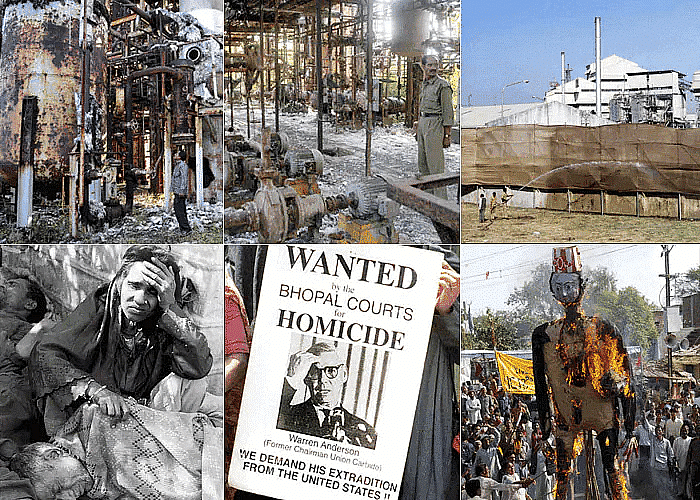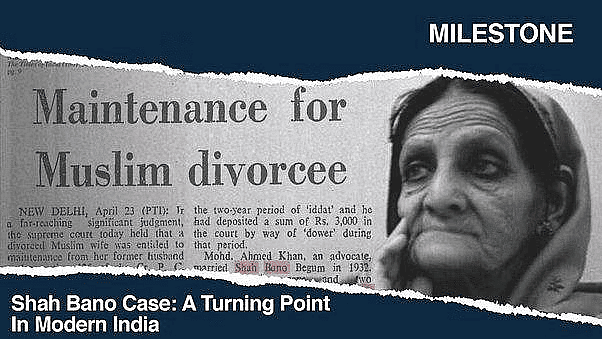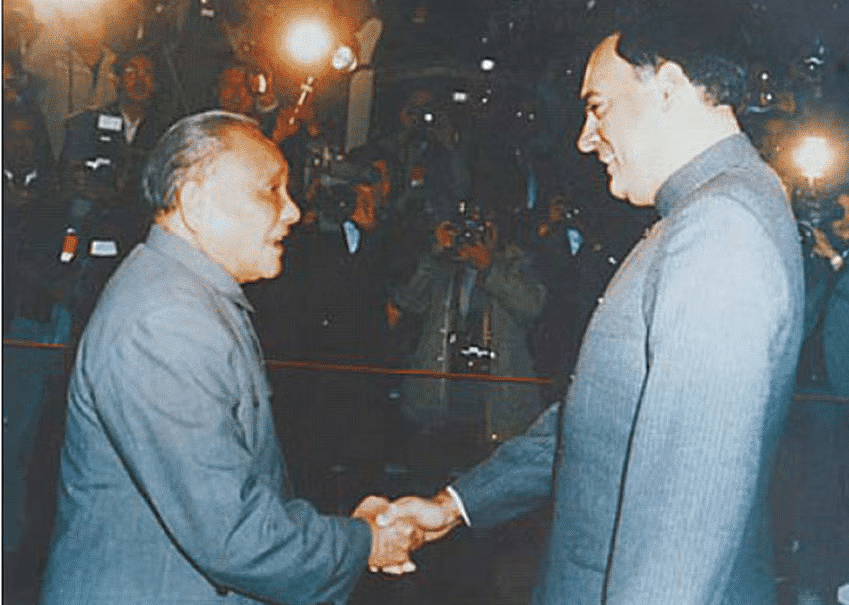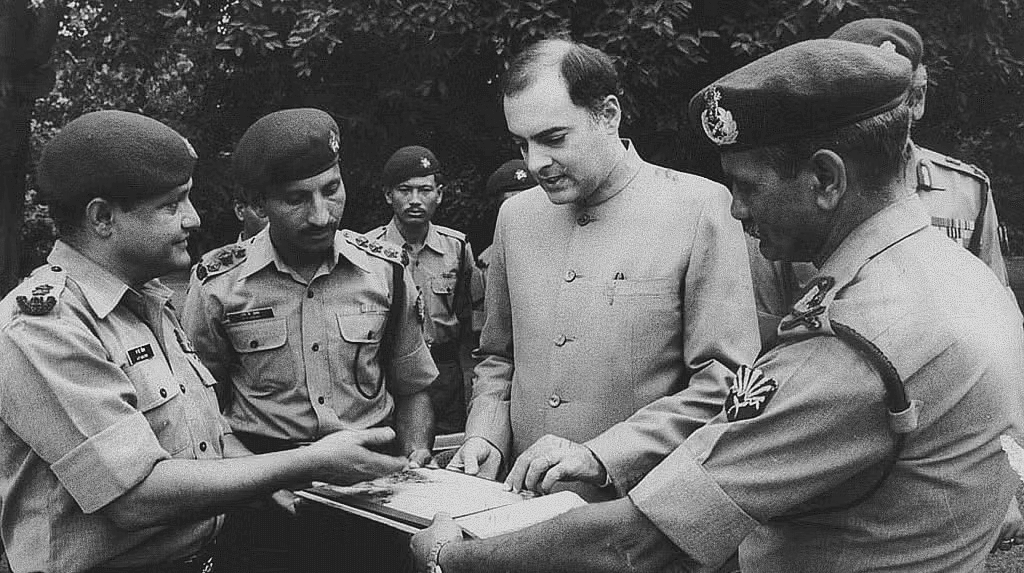Spectrum Summary: The Rajiv Years (October 1984— December 1989) | History for UPSC CSE PDF Download
Challenges Faced by Rajiv Gandhi at the Beginning
When Rajiv Gandhi took over, he encountered significant difficulties right from the start, marked by a series of tumultuous events that would influence the direction of his leadership.
Anti-Sikh Riots
- The anti-Sikh riots in 1984 were violent incidents aimed at the Sikh community in India, especially in Delhi , following the assassination of Prime Minister Indira Gandhi on October 31, 1984. Indira Gandhi was killed by her Sikh bodyguards, who were driven by personal and political reasons, not as a direct response to the Indian Army's Operation Blue Star , which sought to remove Sikh militants from the Golden Temple in Amritsar .
- After Indira Gandhi's assassination, violence against Sikhs erupted, fueled by anti-Sikh sentiments . Mobs, allegedly with political support, engaged in widespread arson, looting, and attacks on Sikh individuals and their properties. Many Sikhs suffered severe violence and loss of life during this time.
- The violence was concentrated in Delhi but spread to other regions of India. The riots persisted for several days, with varying official estimates of Sikh fatalities ranging from 2,000 to 10,000.
- The handling of the situation by law enforcement and allegations of complicity by certain political figures drew significant criticism. The then-government, led by the Congress Party , faced accusations of failing to intervene effectively and being indifferent to the suffering of the Sikh community.
- In 2005, the Indian government set up the Nanavati Commission to investigate the 1984 anti-Sikh riots. The commission's report, released in 2014, acknowledged the involvement of certain individuals and criticized the authorities' handling of the situation.
- The 1984 anti-Sikh riots remain a painful chapter in India's history, and the pursuit of justice and accountability for those responsible continues to be a significant issue for affected communities.

Bhopal Gas Tragedy and 1985 General Elections
Bhopal Gas Tragedy
Overview of the Disaster: The Bhopal gas tragedy, also known as the Bhopal disaster, occurred on the night of December 2nd to 3rd, 1984, in Bhopal, India. It is considered one of the worst industrial disasters in history. The incident took place at the Union Carbide India Limited (UCIL) pesticide plant, where a toxic gas called methyl isocyanate (MIC) was released into the air.
- The immediate impact of the gas leak was devastating. Thousands of people lost their lives, and many others suffered from respiratory problems, eye irritation, and various other health issues. While the exact number of casualties is disputed, estimates suggest around 15,000 deaths and 500,000 injuries.
- The disaster was primarily caused by inadequate safety protocols, poor maintenance of the plant, and insufficient training for the workers. This tragic event raised serious concerns about industrial safety, corporate accountability, and the necessity for effective regulations. The legal and environmental repercussions were long-lasting, involving compensation claims, legal battles, and efforts to hold responsible parties accountable.
- In 1989, Union Carbide and the Indian government reached a settlement of $470 million for the victims. However, there is ongoing debate about the adequacy of this compensation and the accountability of those involved. Many families were left devastated, losing loved ones and facing chronic health issues. The site of the tragedy continues to be a source of environmental pollution, affecting the local community.
1985 General Elections
- The Indian National Congress (INC), led by Rajiv Gandhi, secured a decisive victory in the 1985 general elections, winning 403 out of 514 seats in the Lok Sabha.
- The elections were held in the backdrop of the Bhopal gas tragedy and ongoing political challenges, but the Congress party's focus on development and stability resonated with voters.
- Rajiv Gandhi's government emphasized modernisation and economic reforms, which contributed to their electoral success.

The 1985 General Elections
The 1985 General Elections were a significant political event during the Rajiv Gandhi era, profoundly influencing India's political trajectory. These elections represented a pivotal moment in the country's history, and grasping the intricacies of this period is crucial for UPSC aspirants.
Addressing Ethnic Conflicts Nationwide
Upon Rajiv Gandhi's assumption of the Prime Ministerial role, India was grappling with various ethnic conflicts across different regions. Here’s a detailed overview of key occurrences during the Rajiv Years:
- Punjab: Tensions escalated regarding the Akali leaders. An agreement was reached in July 1985, but the leader, Sant Harcharan Singh Longowal , was unfortunately assassinated in August. Despite this setback, state elections were conducted in September, resulting in a victory for the Akali Dal . Although militancy persisted, robust police actions led by J.F. Ribeiro and K.P.S. Gill , including Operation Black Thunder in May 1988, significantly improved the situation. This operation was a crucial military effort aimed at restoring order in Punjab.
- Assam: Agitation arose over the influx of foreigners. An accord was established between Rajiv Gandhi and the All Assam Students Union (AASU) on August 15, 1985. The subsequent elections in December witnessed the AASU transforming into a political entity, the Asom Gana Parishad , which won decisively. However, tensions with the Bodo tribes persisted, leaving a resolution still pending.
- Mizoram: In 1986, an agreement facilitated the surrender of arms by Mizo rebels, leading to the granting of statehood to Mizoram. The Mizo National Front , under the leadership of Laldenga , assumed power in February 1987.
- West Bengal: The GNLF , representing Nepali-speaking communities in Darjeeling , requested a separate state. Following discussions with Rajiv Gandhi, they consented to the establishment of an autonomous district council instead.
- Tripura: Clashes between tribals and Bengalis led to the emergence of the Tripura National Volunteers (TNV) , who adopted terrorist tactics. This prompted a memorandum in August 1988, wherein the TNV agreed to renounce violence, abandon secessionist aspirations, and negotiate for a power-sharing arrangement within the framework of the Indian Constitution.
- Jammu and Kashmir: Political shifts resulted in public discontent. The 1987 elections, characterized by rigging, fostered disappointment and anger, marking the onset of militancy in Kashmir. Some Kashmiri youth sought assistance from Pakistan, complicating the situation for the Indian government.
Despite the myriad conflicts, this period also witnessed positive developments that deserve recognition.
Positive Changes on the Domestic Front during The Rajiv Years
Rajiv Gandhi addressing the public
Key Initiatives and Reforms
- Changing the System Within His Party: The Prime Minister aimed to enhance his political party. He disliked incompetence , corruption , and blind loyalty. He sought to introduce younger and more energetic leaders, though traditional practices persisted.
- Reducing Bureaucratic Obstacles : The Prime Minister worked to streamline government operations. He aimed to cut unnecessary regulations and make processes more transparent and adaptable for citizens.
- Anti-Defection Act : One of his initial actions as Prime Minister was passing a law in 1985 that prevented elected representatives from switching parties until the next election. This was intended to curb corruption and bribery in politics.
- Environmental Legislation : Following the major incident in Bhopal, the Prime Minister prioritised environmental protection. The Environment Protection Act was enacted in 1986 in response to the disaster, giving the government authority to regulate industries for environmental safety.
- Improving Local Government : He recognised that local governance (panchayati raj) was ineffective in many states. He proposed a new law for regular local elections to enhance local administration. Although the law was not enacted during his term, it was aimed at improving governance in the future.
- First Steps towards Economic Liberalization : The first budget from his government sought to stimulate economic growth. It reduced restrictions, simplified licensing, and made trade regulations more flexible. These changes benefitted businesses but also strengthened connections between politicians and business leaders.
- National Rural Employment Programme : In 1989, he merged two employment initiatives into the Jawahar Rozgar Yojana, focusing on creating more job opportunities in rural areas.
- Technology Missions : Six missions were launched to utilise science and technology for development. They aimed to enhance water quality, increase milk production, decrease edible oil imports, improve health, boost literacy, and upgrade telecommunications.
- Computerization : He promoted the use of computers across various sectors. By lowering taxes on computer components and allowing foreign companies to enter the market, India began to emerge as a significant player in software exports.
- Education Policy : In 1986, a new education policy was introduced, focusing on equal educational opportunities. Operation Blackboard was initiated to enhance primary school facilities nationwide. The Indira Gandhi National Open University (IGNOU) was established to support adult education, and Navodaya Vidyalayas were set up to provide free quality education to underprivileged children based on merit.

Negative Aspects During the Rajiv Gandhi Era
The Shah Bano Case
- In 1985 , the Supreme Court ruled in favor of Shah Bano, a divorced Muslim woman, stating her ex-husband should provide her with monthly maintenance because she was unable to support herself and had not remarried.
- The court emphasized the need for a uniform civil code to promote national unity.
- This decision faced backlash from conservative Muslims, prompting a bill in Parliament to exclude Muslims from Section 125 .
- Despite opposition from Minister Arif Mohammed Khan, the bill was passed in 1986 , overturning the Supreme Court's ruling.
The Babri Mosque Gates Opening
- The Babri Mosque in Ayodhya was a disputed site for many years. In 1986 , a judge in Faizabad ordered the gates of the mosque to be opened for public prayers.
- This decision was believed to be politically motivated, aiming to quell the backlash from the Shah Bano case.
- However, instead of easing tensions, it intensified demands for the construction of a Hindu temple at the site.
- Groups like the Vishwa Hindu Parishad (VHP) became more vocal in their calls for the mosque's demolition.
The Bofors Scandal
- In March 1986 , India entered into a significant arms deal with the Swedish company AB Bofors.
- However, reports emerged the following year alleging that bribes were paid to top Indian politicians, defence officials, and Swedish representatives.
- Investigative journalist Chitra Subramaniam revealed that over Rs 64 crore was paid to influential figures, including Ottavio Quattrocchi , linked to the Gandhi family.
- This scandal tarnished Rajiv Gandhi's image as a clean leader, earning him the nickname 'Mr. Clean.'
Press Freedom Bill
- In July 1988 , in response to the Bofors scandal, Rajiv Gandhi proposed a controversial bill aimed at restricting press freedom.
- The bill suggested imposing jail time on newspaper editors or owners for 'criminal imputation' and 'scurrilous writings,' with definitions determined by the State.
- This move was perceived as an attempt to suppress investigative journalism.
- Although the bill was eventually withdrawn, it had already caused significant harm to the government's reputation.
These instances highlighted the challenges faced by the Rajiv Gandhi government in handling sensitive issues, leading to controversies and a negative public perception.

Agrarian Unrest During the Rajiv Years
Agricultural unrest
- In 1987, a severe drought led to significant distress in rural areas, particularly in the Kalahandi district of Orissa.
- During this period, farmers' organizations began to form, with prominent leaders like Sharad Joshi of the Shetkari Sanghatana and Mahendra Singh Tikait of the Bharatiya Kisan Union playing key roles.
- The Shetkari Sanghatana was active in Maharashtra , advocating for farmers' rights, while the Bharatiya Kisan Union focused on issues in Punjab and Haryana .
- These leaders highlighted a growing divide between "Bharat" (the rural heartland) and "India" (the urban middle class), arguing that the government's economic policies were neglecting rural needs.
- The main demands of these organizations included higher prices for agricultural produce and subsidized power for agricultural use.
- It's important to note that these organizations primarily represented wealthier and middle-level farmers , rather than the poorest segments of rural society.
Foreign Relations
Rajiv Gandhi's foreign policy focused on strengthening ties with the United States while maintaining India's nuclear ambiguity. He communicated directly with US President Ronald Reagan , which led to the cancellation of plans to provide AWACS (Airborne Warning and Control System) aircraft to Pakistan .
Despite moving closer to the West, Rajiv Gandhi advocated for global nuclear disarmament. He proposed a plan at the United Nations in 1988 for a world without nuclear weapons, calling for all countries to eliminate these arms.
Rajiv Gandhi's International Assistance:
- In 1986 , the Indian Navy successfully thwarted a takeover in Seychelles during ' Operation Flowers are Blooming '.
- In 1988 , Indian forces intervened to prevent a coup in the Maldives under ' Operation Cactus '. This operation was aimed at thwarting a coup backed by those seeking a separate Tamil state.

Rajiv Gandhi's Historic Visit to China
- In December 1988, Rajiv Gandhi became the first Indian Prime Minister to visit China since Jawaharlal Nehru in 1954. This visit was a significant step in improving India-China relations .
- Before this visit, there were tensions between Indian and Chinese soldiers in 1986-87 over the border at Sumdorong Chu .
- Rajiv Gandhi's trip marked the beginning of better relations, with both countries agreeing to set up a joint working group to address border issues and a joint economic group to strengthen economic ties.
The IPKF Misadventure in Sri Lanka
- Troubled Sri Lanka: Conflict arose between the majority Sinhala population and the minority Tamils, who sought equal recognition for their language alongside Sinhalese.
- Violent Turn: Discrimination against Tamils led to escalating protests and violence. Various militant groups, including the LTTE, began armed resistance against Sri Lankan forces.
- Tamil Nadu Connection: Tamil Nadu in India felt a strong connection with Sri Lankan Tamils. The state government expressed sympathy, and it is believed that both Indira Gandhi and Rajiv Gandhi covertly supported Tamil militants.
- Jaffna Siege: Sri Lankan forces besieged Jaffna, a Tamil-majority area. Rajiv Gandhi initially attempted diplomacy but resorted to airdropping relief supplies when they were obstructed.
- Indo-Sri Lanka Peace Accord: In July 1987, Rajiv Gandhi was called to mediate. An agreement was reached promising autonomy to Tamil regions, withdrawal of troops, and disarmament of militants. The LTTE had specific demands that led to disagreements.
- Indian Peace Keeping Force (IPKF): India deployed the IPKF to maintain peace, facing challenges due to the island's geography, emotional ties with Tamil Nadu, and resentment from the Sinhalese.
- Military Confrontation: The IPKF took control of the LTTE's headquarters, but militants retreated, resulting in a prolonged and costly conflict.
- Pressure to Recall IPKF: Public demand in India for the IPKF's withdrawal increased.
- Assassination: The misadventure in Sri Lanka led to severe political repercussions, culminating in Rajiv Gandhi's assassination by an LTTE suicide bomber during an election campaign in Tamil Nadu, due to discontent over India's involvement in Sri Lanka.
Rajiv Gandhi faced significant challenges in his efforts to establish peace in Sri Lanka, which tragically ended with his assassination.


General Elections of 1989
In November 1989, general elections were conducted for the Lok Sabha. During this period, V.P. Singh, along with Arun Nehru and Arif Mohammed Khan, departed from the Congress party. They established the Jan Morcha, which eventually evolved into a coalition comprising various parties, including the Jan Morcha, Janata Party, Lok Dal, and Congress (S), leading to the formation of the Janata Dal.
The primary objective of the Janata Dal was to unify centrist parties opposing the Congress government led by Rajiv Gandhi.
Formation of the National Front
- Subsequently, the Janata Dal collaborated with several regional parties, such as the DMK, Telugu Desam Party, and Asom Gana Parishad, to create a coalition known as the National Front.
- This coalition aimed to present a unified opposition to Rajiv Gandhi's administration.
The 1989 elections marked a significant shift, as no single party could achieve an outright majority. This scenario was a pivotal moment, signifying the onset of coalition politics and potential political instability.
In December 1989, Rajiv Gandhi stepped down as Prime Minister. Following his resignation, the Congress party decided to assume the role of the opposition, paving the way for a new political landscape in India.

|
210 videos|855 docs|219 tests
|
FAQs on Spectrum Summary: The Rajiv Years (October 1984— December 1989) - History for UPSC CSE
| 1. What were the problems during the 1985 General Elections? |  |
| 2. What was the agrarian unrest during the Rajiv Years? |  |
| 3. How were the foreign relations during the Rajiv Years? |  |
| 4. What were the positive and negative sides of the General Elections in 1989? |  |
| 5. What were the main problems faced during the Rajiv Years? |  |
















